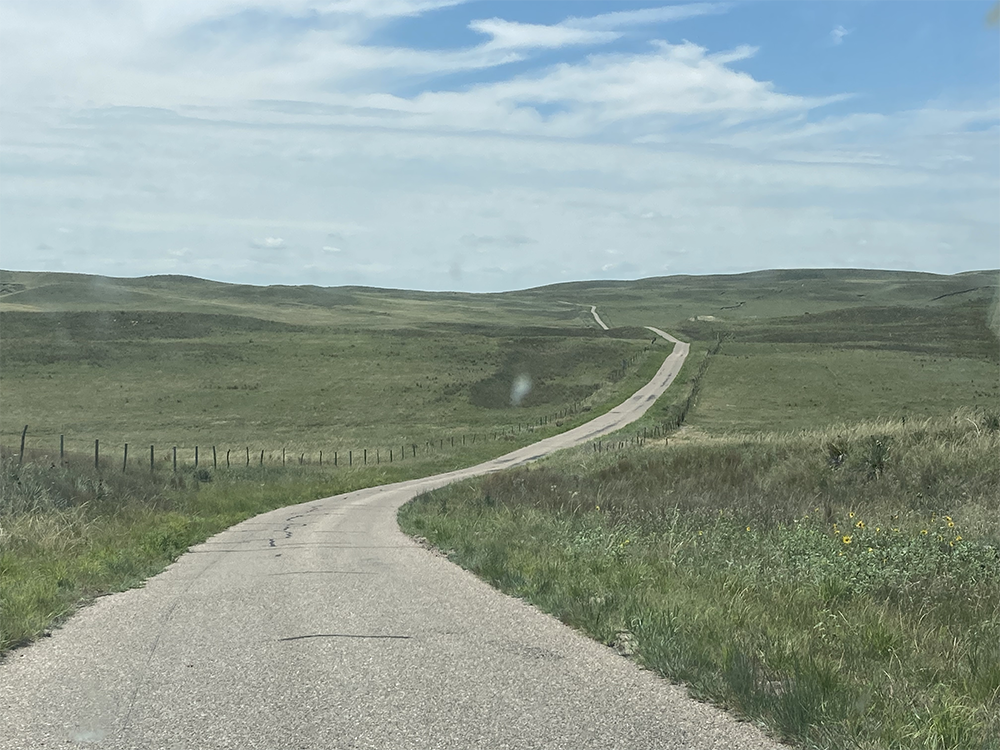Grasses – an evolutionary history
Contact
University of Arkansas System Division of Agriculture
Cooperative Extension Service
2301 S. University Ave.
Little Rock, AR 72204

Grasses – an evolutionary history
As a child of the prairie, I can’t help loving grass. Perhaps it’s the simplicity of a grassy landscape that I find appealing, but seemingly simple things are always more complex than they first appear. Grasses provide about a quarter of the caloric intake for Americans – and even more in developing parts of the world – so are immensely important. Yet they are relative newcomers to the flora of the world.
On my tour of the western states this summer I saw lots of grasslands. In fact, I often adjusted my route to see many of the national grassland preserves scattered throughout the west. My drive through the Nebraska Sandhills, a place I have visited a number of times, equals anyplace I visited on the trip in terms of sheer beauty. Only a person who loves grasses could make such a claim.
Grasses, with about 12,000 species and 780 genera, are the fourth largest plant family and one of the most diverse. One diminutive species is native to Antarctica while giant timber bamboos of Asia grow to 120 feet tall. But mostly grasses grow in open prairie lands and often require a specialist to correctly identify. It is estimated that grasses cover about 20 percent of the surface area of the earth. To humankind they are indispensable. Rice and wheat are critical sources of human food, barley gives us beer, corn gives us chips for dipping and alcohol to burn in our cars, bluestems fatten our cattle, bermudagrass provides for lawns and sports fields, and on and on.
Grasses are evolutionary newcomers to the world stage, only becoming an important addition to the world flora with the demise of the dinosaurs about 66 million years ago. With its windborne pollen, grasses are distinctive and easy to find in ancient soil deposits if you know where to look. A few late Cretaceous age grass pollen samples have been identified, indicating that grasses evolved from their ancient ancestors as a forest-edge plant that grew in moist areas. There was a steady increase in the presence of grass pollen in the record until about 15 million years ago when grasses exploded.
The cause for this explosion was both environmental and physiological. The earth’s ever-changing orbit had wobbled a bit far from the sun and the poles piled high with ice, leaving much more surface area exposed on the continents. But, not only was the world colder, but it was drier. Trees were variable enough to tolerate the cold, but they had problems with the drier climate. Most forests need at least 30 inches of annual precipitation to survive. Grasslands usually expand in areas with less rainfall.
With this large expanse of open ground, grasses expanded their range. But, sometime about this time a new type of photosynthesis appeared in grasses – C4 photosynthesis. Estimates vary about when this actually happen. The clearest direct evidence indicates it was sometime around 12.5 million years ago, but the biological clock technique using estimates of mutation rates, pushes it back to about 25 million. The oldest documented grassland is 30 million years old and found in China. To complicate things, C4 photosynthesis is thought to have originated independently over 20 different times in different grass species.
Most plants (about 97 percent of all plant species), including about half of the described species of grasses have old fashioned C3 photosynthesis. The first product of conventional photosynthesis is a three-carbon compound. In this type of photosynthesis, about 20 percent of the chemical energy generated is lost because oxygen is present and demanding its due in a process called photorespiration. C4 plants, because of an anatomical adaptation to the vascular sheath and the addition of a unique enzyme system, keep oxygen out of the system, producing a four-carbon compound called malate that is the precursor to the production of a six-carbon sugar. Not only is the efficiency of photosynthesis improved, but these C4 plants use water more efficiently because they can close their stomata during the hottest part of the day and still continue to fix carbon dioxide into sugar.
Most of what we think of as warm season grasses – bermudagrass, corn, sugar cane, most prairie grasses, crabgrass, Johnson grass, etc. – take advantage of C4 photosynthesis. Cool season grasses – wheat, rice, oats, fescues, cheatgrass, etc. – are C3 plants. As a rule, C4 plants are intolerant of shade and do better in hotter, drier environments than their C3 counterparts. The world’s great prairie provinces became especially prominent in the landscape as C4 plants began to flex their muscles during the past 6 to 12 million years. The Nebraska Sandhills had their last major deposit of sand about 10,000 years ago with the retreat of the last glaciers from the Rocky Mountains. These deep sands, sometimes forming mounds 300 feet tall, are stabilized by the deep-rooted C4 grasses, remind me of an open ocean sea of grass.
